White grape variety "Pinot Grigio"
The grape variety Pinot Grigio, or more correctly Pinot Grigio, is translated from Italian as “gray bud.” The grape bunch resembles a pine cone, and its weight rarely exceeds 150 g. It is a common technical or wine variety used to produce white wines with a light floral aroma and slight acidity. A distinctive feature of the variety is pink or purple skin with absolutely colorless flesh.
Description and history of origin of the Pinot Grigio grape variety
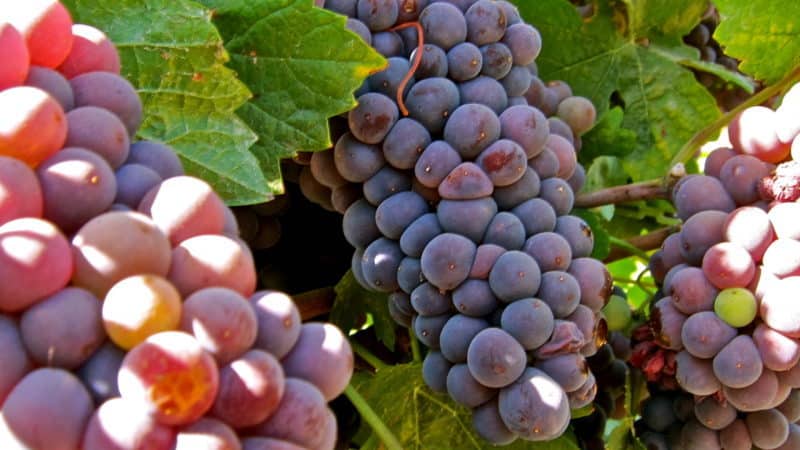
The Pinot Grigio grape variety is a mutation of the white Pinot Noir grape. The grape is part of the Pinot variety group. The first mention of its branch appeared in the 13th century. It is known that Emperor Charles IV himself appreciated the wine made from these grapes.
Pinot's homeland is Burgundy, where the traditional Pinot Gris wine is made from the berries. However, the Italians have learned to produce from grapes a light, aromatic and refreshing wine that outshines Pinot Gris in taste.
In ancient times, Pinot Grigio was called Fromenteau. The variety is grown in France, Germany, USA, Hungary. In Switzerland, its variety is called Pinot Gris. On the territory of modern Russia, grapes began to be cultivated in 1970, after tests were carried out.
At the end of the twentieth century, real success came to Pinot Grigio. Winemakers have learned to control fermentation and found that the berries are suitable for making not only cheap wine, but also an invigorating drink with honey notes.
Pinot Grigio, like all representatives of the Pinot variety group, is demanding on growing conditions and is not highly productive. It grows and bears fruit best in regions with a temperate climate. To obtain berries with excellent taste, a significant difference in day and night air temperatures is important.
The taste of wine depends on the climate and soil type, which is why quality control standards have not yet been created. The taste of the drink varies greatly depending on the area, so there are no general standards.
Before the grapes begin to ripen and the berries turn pink or purple, the Pinot Grigio grape is practically no different from its parent Pinot Noir. In other respects, the varieties are identical: small, densely spaced berries, a conical cluster resembling a cone.
Pinot Grigio is a white variety; despite the dark color of the skin, the flesh is white.
Interesting. Translated from Italian, grigio means “gray lump.” Indeed, the grape cluster is shaped like a pine cone.
Characteristics of the variety
The bushes are tall, powerful, highly branched. The crown with the first leaves on the shoots is densely pubescent, colored along the edges in wine-red color. Annual shoots are light brown, with dark nodes and shortened internodes.
The leaf blade is medium in size, round in shape, three- and five-lobed, with a weak cross-section, 15 cm long and 12-14 cm wide.
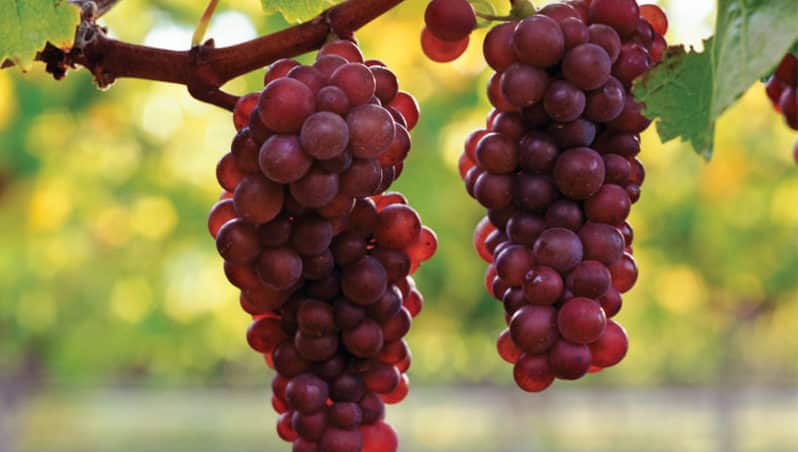
The flowers are bisexual and do not require pollinators.
The clusters are medium-sized, cone-shaped or cylindrical-conical, dense. Brush weight - 80-150 g.
From the moment the buds appear until they fully mature, 140–150 days pass.
Clone Nero underwent a mutation, so the color of the skin became less pigmented.The skin is thin but resistant to damage.
The berries are pink or purple, with a gray waxy coating, and the flesh is light, almost transparent. The shape is round or slightly oval. Each berry has 1-3 seeds.
Aroma with notes of pear, apple, lime, lemon and white nectarine, spices, honey and flowers.
The taste is balanced. Acidity juice medium or high, sugar content 20%.
Sustainability
Pinot Grigio is characterized by high frost resistance. The bushes tolerate frosts down to –20 °C, and even if they suffer from frost, they quickly recover.
Similar varieties
There are several varieties related to Pinot Grigio: Meunier, Blanc, Franc, Nero, Noir.
Pinot Meunier (Pinot Meunier or Black Riesling) is one of the most sought after varieties for making wines with a rich and refined aroma. Translated from French, “meunier” means “miller”. The crop is grown in France. I use the products for the production of sparkling wines and champagne.
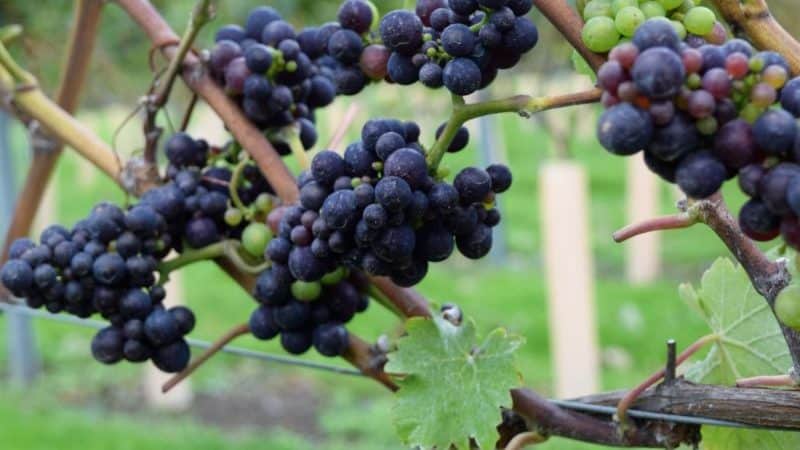
Pinot Blanc - an old mutation of the Pinot Gris or Pinot Grigio variety. Bushes - tall or medium-sized. The vineyards are located in Italy, Australia, France, Germany and the USA. The grapes ripen early and are characterized by stable yields. The raw materials are used to produce expensive white wines.
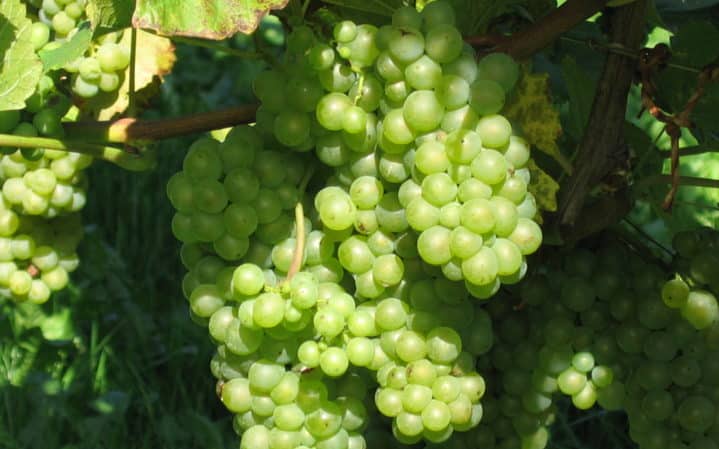
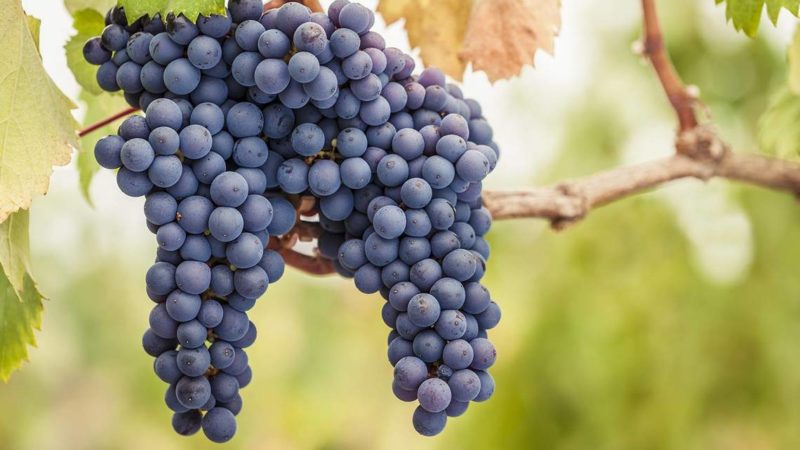
Pinot France - an early ripening variety that is resistant to drought, recommended for cultivation on calcareous soils and dry hilly slopes. When cultivated on flat terrain, shedding of flowers and ovaries and freezing of the vine are observed. The berries are dark blue, almost purple, and the flesh is transparent and colorless.
Рinot noir translated from French means “black lump”.The variety appeared in Burgundy, later it began to be cultivated almost everywhere, but the best performance is observed when cultivated in regions with a temperate climate. The raw materials are used for the production of white sparkling wines.
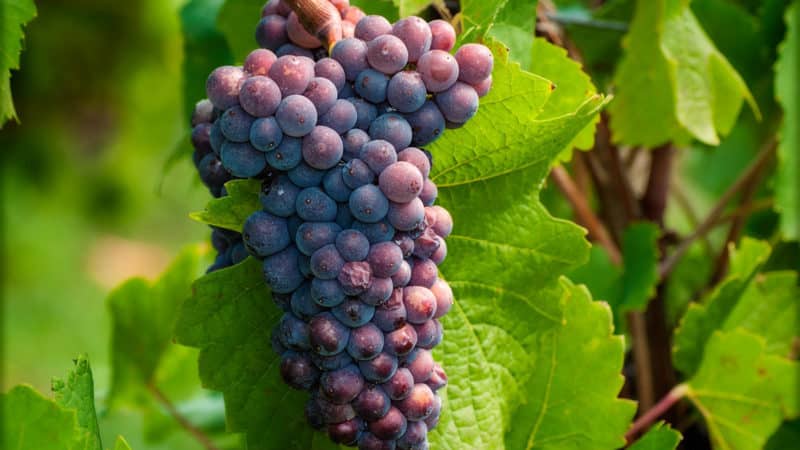
Pinot Nero - Pinot noir clone. The variety is grown in Switzerland as a separate variety. Has similar characteristics to Pinot Noir. Aroma guilt - fruity, floral, oaky.
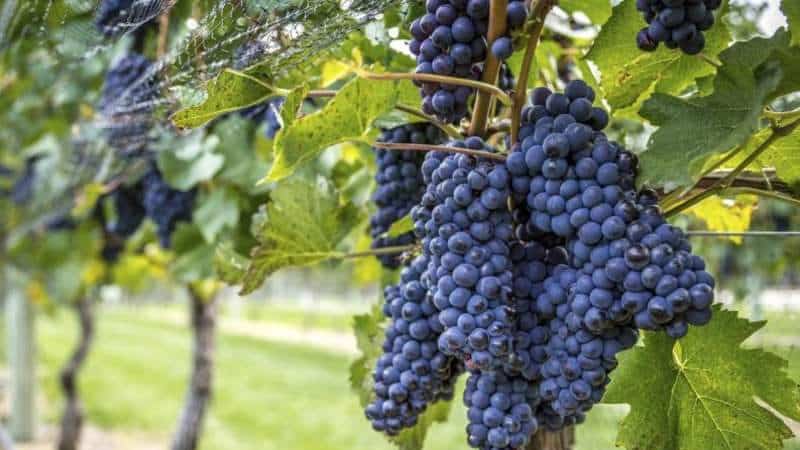
Wine from Pinot Grigio
Pinot Grigio is a technical grape used to produce three styles of white wine:
- Fruity, dry style. The wine has a rich fruity taste, with notes of lemon, apple and peach. This is an average version of Pinot Grigio and Pinot Gris, with minimal acidity. Vineyards are cultivated in Italy, Chile, Australia and New Zealand.
- Fruity, sweet. This is a pure Pinot Gris with honey, caramel and citrus aromas. It is produced in France.
- Mineral, dry. The wine is produced in northern Italy, Romania, Austria and Hungary. Grapes grown in the Alps are characterized by a high acid content, therefore they contain 10-12% alcohol, and have a recognizable taste and aroma. It is served with vegetables and seafood.
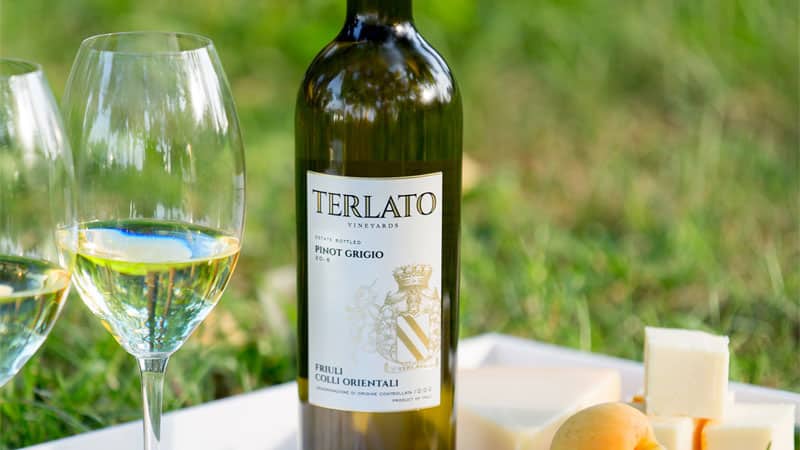
Modern French wine Pinot gris has a rich flavor palette. Italian Pinot Grigio is light, floral with a slight acidity, it has the aroma of white bread thanks to the yeast, which eats all possible sugar, releases the maximum possible amount of alcohol and precipitates. It is this that gives the noble yeast tone, highlighting the fruitiness.
There is also Pinot Grigio rosé wine. It is obtained by long-term infusion of grape pulp. The dark pigment of the skin turns the flesh pink.The finished drink becomes light strawberry color. The wine is produced in the Friuli region of North-East Italy under the name Ramato. The aroma reveals notes of cherries, raspberries, dried cranberries and leather.
White Pinot Grigio is served chilled to +7 °C as an aperitif, with poultry, fish, and vegetables. The drink is light, refreshing, and quenches thirst well on a hot summer day.
Reference. Italian wine is aged in old oak or steel barrels so that the taste is not astringent.
Planting seedlings
For planting Pinot Grigio seedlings, choose sunny, open areas, without shading or drafts, preferably on the southwest or south side.
The type of soil plays an important role. Grapes develop best on calcareous and humus-carbonate soil. 3 months before planting, separate holes or trenches 0.5 m deep are prepared. The bottom is lined with broken bricks or gravel, soil mixed with humus, 5 kg of ash and 0.5 kg of azophosphate are poured on top, then a layer of clean soil.
Planting is done immediately after purchasing seedlings to prevent the roots from drying out. The seedlings are soaked in clean water at room temperature for 24 hours, then the roots are shortened and the shoots are cut into 3-4 buds. The roots are dipped into a mixture of clay and manure in a ratio of 2:1 and planted in prepared recesses every 80 cm. The row spacing should be 1 m. The seedlings are completely covered with soil and the surface is compacted.
Subtleties of care
The first three years after planting, grapes need special care:
- Pruning and shaping of fan bushes into 4 sleeves is carried out to increase productivity.
- Late spring and autumn pruning is carried out simultaneously with effective snow retention due to early bud break.
- When cultivating using covered viticulture technology, which is practiced in regions with cold climates, winter protection is kept until the onset of stable warmth.
- The soil around the bushes is regularly loosened and weeds that deplete the soil are removed.
- In the spring, the procedure of unhilling and catarification is carried out - cutting off thin roots and backfilling the bare trunk.
- During the period of active development, the vineyard is regularly watered. Water consumption per bush – 10 liters. In the future, installing a drip irrigation system will help control the moisture supply.
- Long shoots are broken off and tied to wooden stakes.
- Organics and minerals are added three times a season: before and after flowering, after the appearance of ovaries. For root feeding, the following compositions are used: 90 g of urea, 60 g of superphosphate, 30 g of potassium sulfate. The ground around the bushes is mulched with compost or humus (20-30 l/1 m²).
- Upon reaching four years of age, the bushes are regularly pruned into a fan, cordon or standard shape. Pinot Grigio propagated by cuttings. This method is still considered the most effective and cost-effective.
Disease and pest control
Pinot Grigio cannot boast of strong immunity and, depending on the area of cultivation, is susceptible to various diseases. They arise as a result of the negative impact of the external environment and neglect of care rules:
- growths and swellings appear on the roots as a result of infection with grape phylloxera;
- growths on the trunk are the first symptom of infection with bacterial cancer;
- grapes are often affected by acacia false scale insects, mealybugs, grape cushion, and grape leaf mites;
- Chlorosis (yellow leaf tips and their subsequent death) poses a particular danger to Pinot;
- delayed growth of shoots, curly leaves with a gray-white coating, dying off of inflorescences, cracking of berries - signs of powdery mildew;
- Infection with black spot is indicated by black, oblong spots on the lower internodes with a crack in the middle in the summer, white-gray color of the bark with a large number of dark dots;
- dull foliage color, numerous black pinholes indicate the appearance of a spider mite;
- mosaic-type discoloration of leaves is characteristic of boron deficiency;
- lightening of the leaves along the edges and between the veins indicates a lack of magnesium;
- purple color of the leaf blade indicates potassium deficiency;
- leaves twisted into a tube are the result of infection by the tubeweevil.
To combat fungal and bacterial infections, sulfur or preparations with colloidal sulfur are used. After flowering bushes process “Bayleton”, “Topsin M”, “Rubigan”, “Horus”, “Skorom”.
To destroy pests, insecticides are used: “Fastak”, “Aktellik”, “Zolon”, “Fufanon”, “Fury”, “Kinmiks”, “Danalim”, “Apolo”.
No less effective and safe for humans are biological products: “Lepidocid”, “Bitoxibacillin”.
Interesting. In 1863, phylloxera, an insect that feeds on grape roots, was accidentally brought from the North American continent to Europe. This became a real disaster for winegrowers; the pest caused enormous damage to grape plantations.
Harvest and storage
To create the unique style of Pinot Grigio wine, the grapes are harvested by hand before technical ripeness, when the berries contain more acid.The technical grade is not stored for a long time, but immediately after harvesting in September it is put into processing.
Advantages and disadvantages
Advantages of the variety:
- pleasant balanced taste and aroma;
- possibility of processing into wine;
- attractive appearance.
Flaws:
- susceptibility to fungal and bacterial infections, insect attacks;
- low productivity and keeping quality;
- demanding soil and care;
- bushes need in shelter for the winter.
Conclusion
The Pinot Grigio grape is a long-standing industrial variety used to produce white wine. It is characterized by low productivity, but withstands frosts down to -20°C and shows the best results when grown in temperate climates.
A distinctive feature of the berries is their juicy, almost colorless pulp and purple or pink skin. The success of cultivating the variety depends on compliance with the rules of agricultural technology. Bushes need pruning, moderate moisture, feeding with organic matter and minerals, shelter for the winter and prevention of fungal and bacterial diseases.